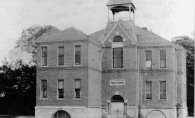Today’s young Tonka United soccer players may not realize it, but their popular local program was, in fact, founded by an Englishman. In 1977, Victor Anderson, a longtime fan of the sport, had been coaching a successful recreation department soccer team that included his son Cliff. The skill and talent of this young team led Anderson to consider entering the realm of competitive soccer though the Minnesota Youth Soccer Association. Dozens of phone calls and a buzz of discussion were part of charting the course into the realm of traveling soccer. “Tonka United was essentially born at our family’s kitchen table,” Cliff Anderson says. Tonka United Soccer Association has provided quality soccer programming for 36 years. What began with one team of 13 –14 year-old boys in the spring of 1978 has grown to accommodate more than 1,000 boys and girls from pre-K through adult. Tonka United offers spring, summer and fall soccer leagues in both competitive and recreational programs.The name “United” symbolized Victor Anderson’s soccer philosophy. He encouraged enjoyment of the game, team play, team spirit and good sportsmanship. These principles underscore the organization’s contemporary mission: To foster the physical, mental and emotional development of youth in the Minnetonka and Hopkins school districts and surrounding area through soccer at all levels of age, skill and competition.The competitive accomplishments of that first Tonka United team led to yearly growth in player participation and tournament successes. The groundwork had been laid and by the early 1980s, Anderson understood that Tonka United was ready to move into yet another growth phase. This expansion would include dozens of parent volunteers and the development of a board of directors.Denny Wollan is the current Tonka United board president and he followed a path Victor Anderson might have envisioned more than 30 years ago. Wollan began as a volunteer coach for his young daughters. “I wanted to be involved with my kids and with the community,” Wollan says. “I’ve loved soccer for many years and have a passion for youth sports, so when I was approached about being on the board, it seemed like a good fit.”Wollan has served as president for three years. During his tenure, he’s worked closely with the school district on the installation of new artificial turf at Minnetonka High School. “This is the first ‘real’ soccer field for the district in terms of proper length and width,” he says. “Field width can sometimes be an issue because soccer fields for older players are wider than American football fields.” Tonka United considers the school district a major partner in field use and intends for the new turf to benefit both Tonka United players as well as school teams.Interest in soccer has not appeared to wane in the three decades since Tonka United launched. Director of coaching and player development Jonathan Schaefer has seen participation in youth soccer evolve from kids simply kicking and chasing the ball to kids trying to develop and improve their soccer skills. “Not too many games allow kids to play on the field without adults telling them what to do,” Schafer says. “Coaches can’t call a timeout. Players learn to cooperatively master skills toward a common goal during a continuous flow of play.”That continuous play is what energizes players and engages parents. “Parents want their kids to build positive values and habits,” Schafer says. “They also want their kids to get some exercise in this increasingly sedentary world. Soccer is win-win. Kids love it and parents love their kids to play it. Soccer remains the most widely played youth sport in the United States.” GET INVOLVED Program registration for spring recreation soccer begins in February. Competitive/traveling soccer starts for second- and third-graders with the new U8 Academy, a five-week training program to determine competitive readiness. Tonka United Soccer Association tonkaunited.org
Menu
From the September 2013 issue
Tonka United Soccer Is Still Kickin’ It
Tonka United Soccer Association scores with more than 1,000 youth players each year.
The original Tonka United U14 soccer team in 1979, its second competitive year when the program only offered teams for boys.









